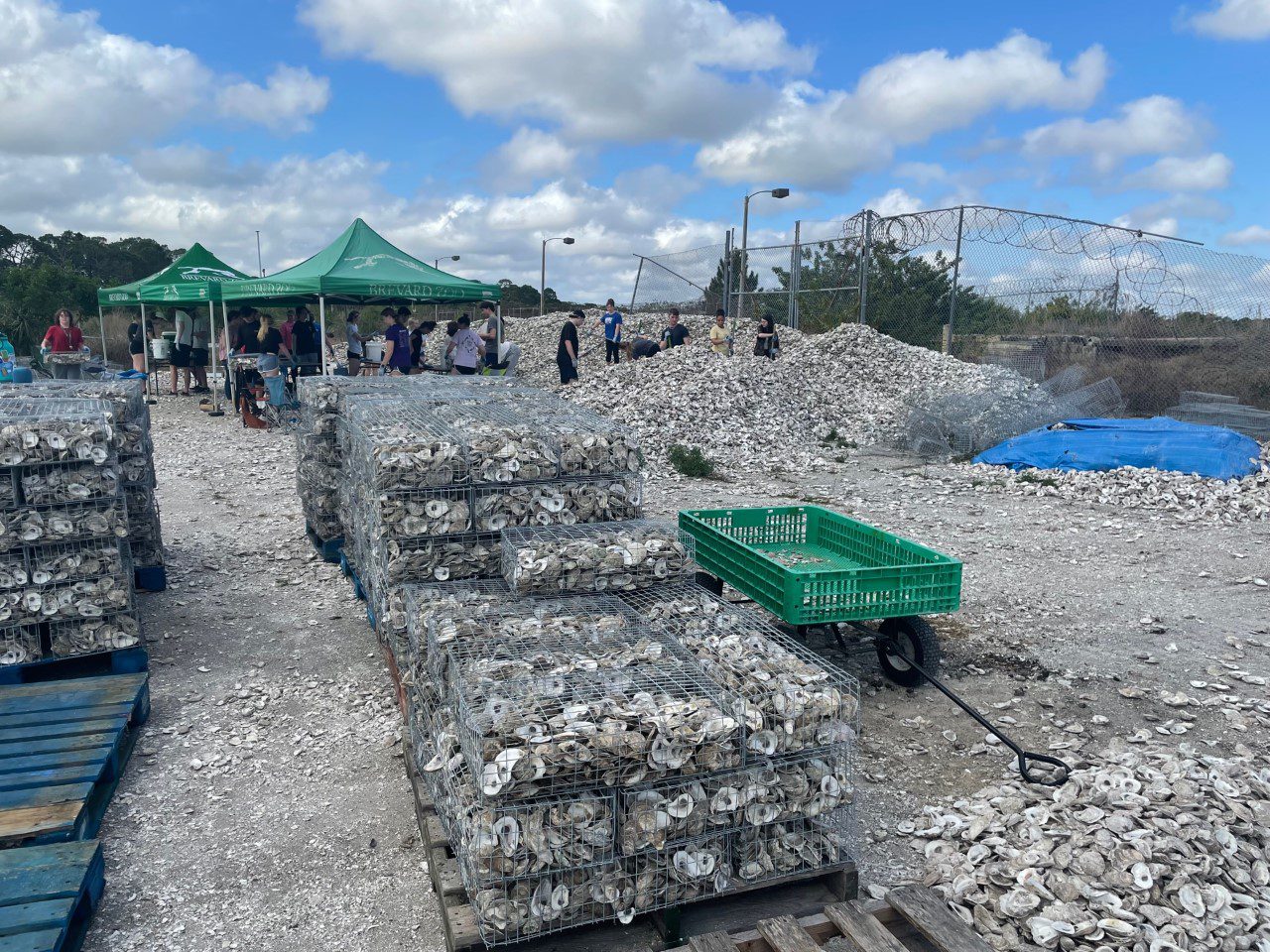
Oysters: the Selfless Shellfish
Oysters are considered a keystone species in the Indian River Lagoon (IRL) and hold a vital role in keeping the ecosystem balanced. From filtering and cleaning water, helping to control harmful algae blooms, protecting shorelines, to supporting growth of coastal marshes, it’s easy to see why Restore Our Shores (ROS) has worked for the last decade on a variety of projects to increase lost oyster populations that improve lagoon health.
Oyster Reef Restoration
With the experience gained from deploying oyster mats in the Mosquito Lagoon, ROS embarked on oyster reef restoration in the Brevard County portion of the IRL. By placing oyster shells in plastic mesh bags in the lagoon for oyster larvae to attach to, the shells encouraged natural reef structures to form that attracted live oysters.
In 2020, we shifted away from plastic mesh bags for galvanized metal cages called gabions. Hand-built by our staff and volunteers, gabions offered an opportunity to better mimic an oyster’s natural habitat, provide better water circulation. Switching to gabions also gave us a plastic and pollution-free material in keeping with our mission to be more sustainable.
Gabion Success
We determined that gabion use did provide better results, naturally recruiting over 40% more live oysters! Why? Larger openings in the gabion mesh and increased height of gabion reefs allow for increased water flow over the shells, increasing the probability of oyster larvae to settle on the shells and for food to pass by growing oysters. This was great news, but we didn’t stop there, looking for even more ways to impact reef restoration and improve project performance.

The Next Phase: Gabion Corrals
2022 saw the introduction of gabion corrals – building a border of shell-filled gabions with loose, recycled oyster shell in the middle. Beginning in Ryckman Park in Melbourne Beach with side-by-side gabion reefs, we found after a year of monitoring that around 40,000 oysters recruited to the 900-square-foot project, resulting in habitat for over 20 different species!
While the oyster density was slightly lower from the corrals vs. the previous gabions due to vulnerability of the loose shells to predators, the project has many benefits and is slated to continue. Corrals create a productive habitat for live oyster larvae to grow, use less man-made materials, and reduce project costs and needed labor.
What's Next?
Most of our 20+ oyster projects in 2023 will use oyster corral designs. We plan to pilot oyster corrals with locally sourced limestone walls instead of gabions, eliminating man-made materials entirely! We look forward to building oyster reefs along south Merritt Island, Melbourne, Indialantic, and Palm Bay.
Oyster Reef Restoration
Live On The Indian River Lagoon?
Oyster Gardening
The oyster gardening program encourages the community to get involved with restoring local oyster populations to the IRL. After nearly a decade of the program, oyster gardening has helped expand reef restoration into the more challenging Brevard County portion of the IRL. This work isn’t possible without volunteers who live along the IRL who collect data and care for routine maintenance of the habitat. Learn more about Oyster Gardening.
Oyster Gardening
Help Us Restore Our Shores
We always need volunteers for our lagoon rstoration projects. Our work would not be possible without the help of volunteers. We encounrage you to investigate what availability we have for participants in our programs. We look forward to having you support Restore Our Shores. More Questions? Email us.

